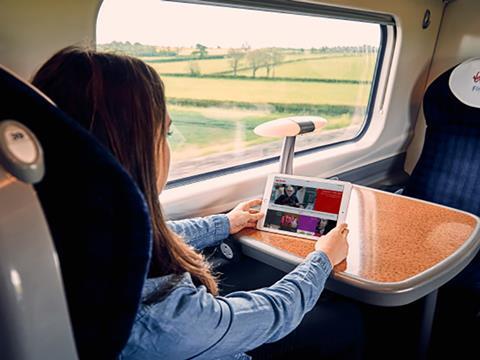
UK: Virgin Trains passengers can now use their own mobile devices to access free on-demand entertainment including 200 h of film and television content as well as the latest issues of various magazines.
Infotainment system supplier GoMedia’s BEAM platform stores the content on onboard servers. ‘Our platform makes use of Virgin Train’s existing on-board wi-fi infrastructure, so not only can passengers stream great movies, television shows and more over the trains’ wi-fi network, those passengers wishing to use off-train connectivity for lower bandwidth data uses will find it to be far more efficient’, explained GoMedia Managing Director Roger Matthews. ‘With approval of the GoMedia platform from all major content owners, Virgin Trains can offer customers premium video programming from Hollywood studios, BBC Worldwide and more, contributing to an altogether outstanding customer experience.’
The roll-out has been supported by an upgrade of the Nomad Digital wi-fi infrastructure. BEAM is available on all Virgin West Coast Main Line services operated using Alstom Pendolino trainsets, and is to be rolled out across the Bombardier Voyager fleet by September 2016. On June 6 the roll out began on Virgin Trains’ East Coast services, where free station wi-fi is also to be provided. The content will vary between the two franchises.
Passengers need to download an app before boarding. The film content is updated monthly, and if the passenger reaches their destination before they have seen the full film the app will remember when they left off, ready to show the rest of the film on their return journey.
‘We’ve worked really hard to provide a fantastic range of entertainment to cater to all of our customers’ tastes and are really proud to offer this service that is the first of its kind to the rail industry’ said Patrick McCall, Co-Chairman of Virgin Trains. ‘The new service is more advanced than the systems currently available on planes as customers use their own devices, which normally have larger screens with better picture quality than standard seat-back devices.’




















